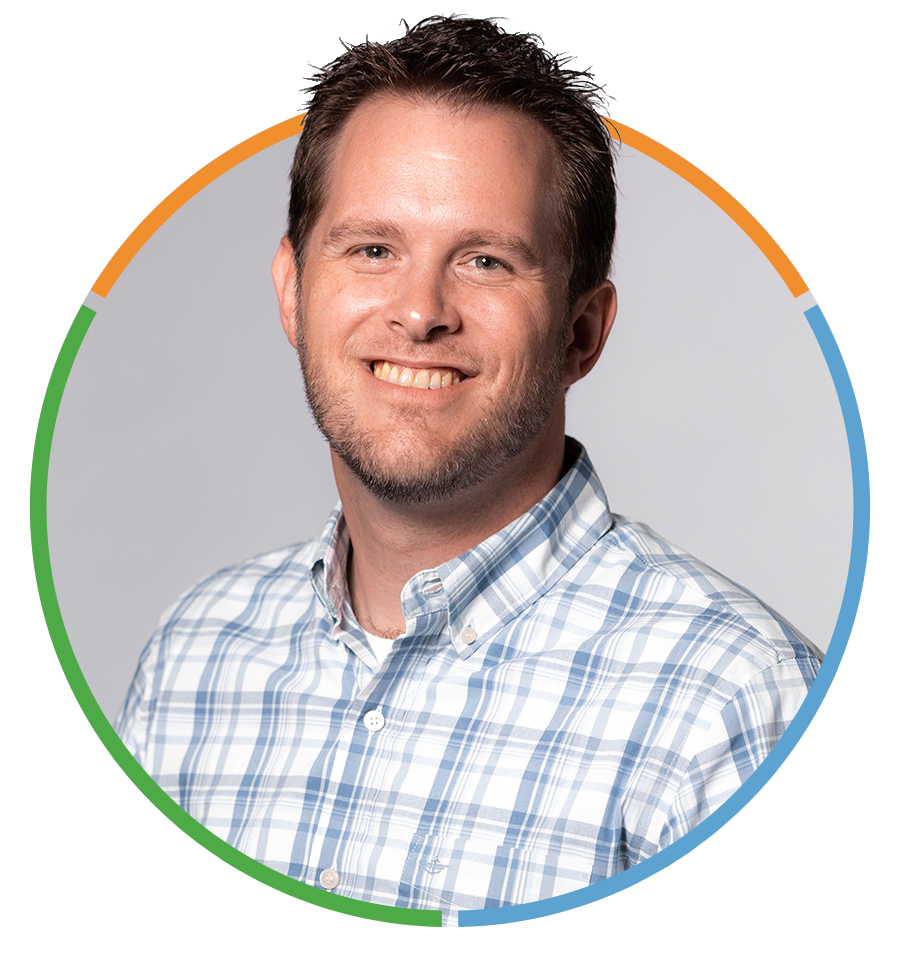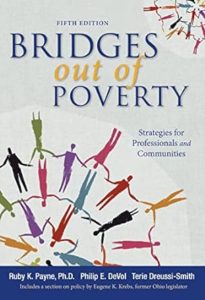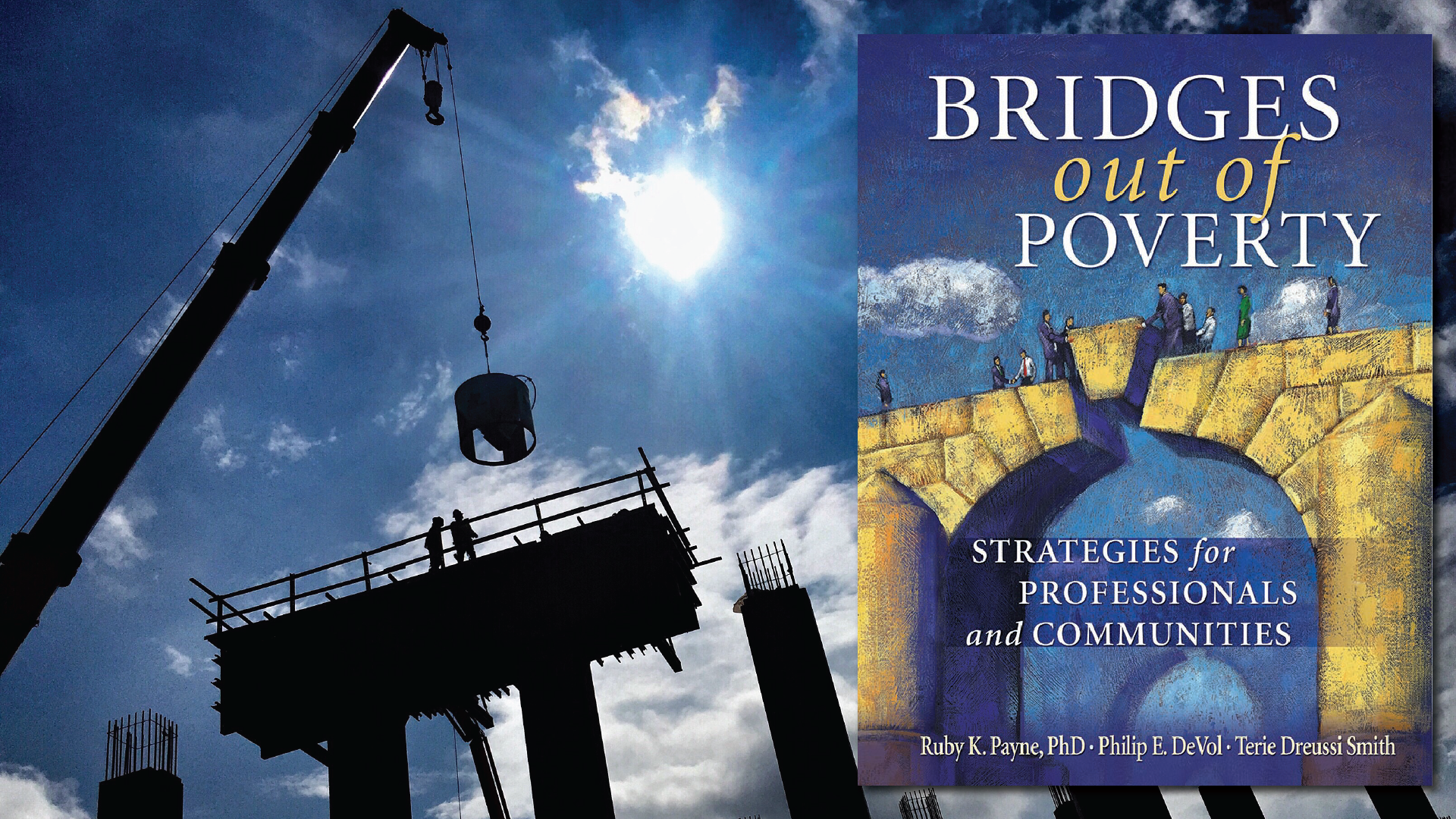Building Bridges on Firm Foundations: An Examination of Bridges Out of Poverty

Jeff Lofting
Director of Education
Read more from Jeff
Jump to:
The Perspective | The Purpose of the Book | The Key Points | Considerations | Who Should Read This?
When it comes to fighting poverty, we base our approaches and strategies on the presuppositions we hold about the causes of poverty and on the aim of our charity work. This is summed up greatly in a quote from the book When Helping Hurts (71):
“Just as our diagnosis of the causes of poverty shapes the remedies we pursue, so too does our conception of the ultimate goal.”
When our conception of the causes of poverty are accurate and the aim of our work envisions human flourishing, it will likely produce more effective and long-lasting outcomes.
In Bridges Out of Poverty, the authors address what they ultimately believe are the causes of poverty and the aim of our efforts. Regarding the latter, the authors imply throughout the book that the aim of our work is for individuals to “move from poverty to middle class” (12, 77, 99), even though they rightly acknowledge that escaping poverty is not simply accomplished through an acquisition of financial resources. Additionally, the authors attribute the cause of poverty perpetuating from generation to generation on patterns or generalizations of “the poor”–and, if these patterns can be recognized and adapted to what is acceptable to the middle class, they are more likely to attain the aim of upward mobility. (More is discussed on these topics in the Considerations section.)
The authors state, “[T]he mission of this book is to give middle-class professionals insight into the reasons and motivations of people from the poverty culture” (91) by equipping the readers of the book with a “mental model of poverty” (5) through a discussion of these patterns. To clarify, the “middle-class professionals” span the roles of those in “social service, health care, or [the] work setting,” as indicated in the “Implications” section at the end of numerous chapters.
Class Strata and Hidden Rules:
The authors base their framework for reducing poverty on separating society into three classes: poverty, middle, and wealth, and go on to make, oxymoronically, detailed generalizations about each of these classes, described as hidden rules, including views of money and possessions, food, clothing, time, education, love, and even humor (44). These societal strata inform the remainder of the book. (Be sure to read an important note about the source of these generalizations in the Considerations section.)
Registers of Language:
The authors provide a sociological approach to understanding poverty through the discussion of registers of language that every language is said to contain. The register is distinguished by its level of formality and specific vocabulary and syntax that is used within that context. Although five are listed, the two main registers discussed throughout the remainder of the book are casual and formal (31). The author contends that the formal register is essential to accessing the best educational and employment opportunities, areas essential to reach at least the middle class. However, the authors argue that “the majority of minority students and poor students … do not have access to the formal register at home” (32).
Patterns in Generational Poverty:
The authors distinguish between those experiencing situational poverty (a lack of resources due to a particular adverse event) versus generational poverty (“having been in poverty for at least two generations”). They posit that those in the latter will naturally exhibit patterns based on their social class (49). These include the following claims regarding those in poverty:
-
- “Almost always the TV is on, no matter what the circumstance.”
- “The mother has the most powerful position in the society if she functions as a caretaker.”
- “A ‘good’ woman is expected to take care of and rescue her man and her children as needed.”
- “People are possessions.”
- “Options are hardly ever examined. … These kinds of statements are common: ‘I quit’ and ‘I can’t do it.’”
- “Many of the homes/apartments of people in poverty are unkempt and cluttered. Devices for organization (files, planners, etc.) don’t exist.”
- “Lives in the moment — does not consider future ramifications.”
Importance of Support Systems:
As previously mentioned, the aim in the mind of the authors is for those in poverty to move up into the middle class. In order for this to occur, they must be introduced to the hidden rules of the middle class, upgrade their registers of language to include the formal register, and overcome class-based patterns. This is accomplished by buttressing one’s support systems, including coping and problem-solving strategies, general knowledge and know-how, social connections and networks, and positive and procedural self-talk. Interventions can be adapted within social service and workplace settings to account for and train those in poverty in these support systems. An entire chapter is dedicated to the topic of mentoring, including a basis for the practice and practical tips. An emphasis is placed on formal and informal mentoring in the workplace.
Definition of Poverty:
As was discussed before, the diagnosis of the causes of poverty and goal of our efforts is vitally important in informing our remedies, or strategies. Therefore, an accurate definition of poverty is essential. If you are at all familiar with True Charity, you are aware that we wholeheartedly endorse Brian Fikkert’s and Steve Corbett’s explanation of poverty as a break in the four foundational relationships in God’s original design: God, self, others, and the rest of creation. It should be noted that these dysfunctional relationships are not just observed in “the poor” but in all humanity, though material poverty is a common symptom of breaks in these relationships. We appreciate the acknowledgement by the authors that the basis of poverty is not financial and that emotional, mental, spiritual, physical, and relational resources “play a vital role in the success of an individual” (12). Most of these “resources” could fit within the four foundational relationships.
However, where the worldviews obviously diverge is in the aim of our poverty-fighting efforts. Whereas the authors advocate for mobility of those in poverty into the middle class, we believe that the aim of true charity is shalom, which is wholeness or healing of those foundational relationships in the individual. The approach of the authors is in stark contrast with the thesis of the work covered in a previous Book Highlight discussing Becoming Whole. Fikkert and Kapic specifically address the unfortunate (and ultimately unsatisfying) goal of many poverty-fighters, both religious and secular, to assist “the poor” in attaining the American Dream. Instead, they contend that our true aim should be to help individuals become whole, as God intended them.
Generalizations of Classes:
The generalizations of each of the three classes are a foundational aspect of the entire book, and they are presented in a rather conclusive research-based manner. For example, for those in poverty, humor is about people and sex; for those in the middle class, it is about situations; and, for those in wealth, it is about social faux pas (44-45). However, the basis of these generalizations is by no means empirical, and no overt attempt is made to explain the basis of these contentions. One must turn to the Research Notes section (234-238) of the book to discover that these generalizations are collected from rather non-authoritative sources.
The reader will find that some sources are first-person accounts that include observations about their specific setting (e.g. “Watson School,” “South Central L.A.”) or are anecdotal in nature. A number of sources are quite dated, five of the twelve having been written as early as 1956 to 1972, which is one of the dangers of generalizations – they are not timeless and can hinder one’s work when based on inaccurate assumptions. Other cited sources are steeped in Marxist ideology, one labeling multiple classes as versions of the “proletariat” and another describing itself as “uncover[ing] and defin[ing] a new form of class conflict in America.” One source is commonly depicted as tongue-in-cheek and a “snide” attempt at categorizing society by classes. Some of the more descriptive generalizations look to be derived from these works, based on the notes.
Whether you refer to them as cultural norms, social mores, or hidden rules, differences in culture exist, and culture–a common language, history, and behavioral characteristics–can most certainly apply to social status. There are also undoubtedly patterns observed in human behavior due to our common nature. Certain aspects of our nature will be more commonly observable in serial crises, which those in poverty are more likely to experience more often and with more severity. The reader will also certainly recognize some of the patterns outlined in the book in those with whom he or she works, and maybe even in the context of his or her own extended family. These might serve as an aid (even sort of a psychological shock absorber) as you encounter and process the tragic and unimaginable stories common among those with whom we work.
However, the charity worker must be cautious to not allow observed patterns and generalizations to cause inattentional blindness, the psychological phenomenon of being blinded to that to which we are not paying attention. If we assume that all homeless teens, for example, are juvenile delinquents, we might be blinded to a circumstance where one is being sex trafficked. We must view each encounter with those we are serving with this phrase in mind: “Question your assumptions.” Deliberate observation of that individual’s unique background, personality, experience, and skillset will allow us to better see the whole picture and determine the appropriate intervention that address the root causes of his or her poverty. (Learn more about inattentional blindness in the True Charity Takeaway entitled Assume Nothing and in the True Charity University course on Discernment.)
Importance of Relationships and Mentoring:
We applaud the authors’ emphasis on healthy relationships. In the absence of functional dynamics among one’s family and friends, an important factor in escaping material poverty is a restoration of healthy relationships with others, or ”bonding” as we refer to it. We acknowledge that there are habits, lifestyle patterns, and decisions that lead to a more fulfilled life, but these are not based on the utilitarian rationale of “the poor” reaching the middle class, as presented by the authors. We hold that they are based on a restoration of those foundational relationships, primarily one’s relationship with their Creator. And, building healthy relationships with those who can walk alongside another to mend those behavioral and decision-making patterns are key to working toward shalom, or wholeness.
Practical Advice to Those in Work Settings:
A major route out of poverty is full-time work, and keeping that work is obviously a major factor, considering that only 2% of full-time workers live in poverty (see pg. 57). An aspect of this book that we appreciate is the practical advice given in numerous chapters directed toward those that regularly employ those trying to escape material poverty. Business leaders in these settings can greatly benefit by understanding the common issues experienced by those in poverty. Practical advice is provided on how to walk alongside those dealing with regular crises instead of the mutually detrimental practice of immediately firing the offender (75-77, 109).
Program Design and Evaluation:
Two separate chapters are dedicated to the topics of client-focused process review and organizational collaboration. As the authors posit, it is necessary to regularly examine the processes we employ to ensure they are focused on the success of those in need that we serve. In our work, we sometimes tend toward what makes our jobs easier, even if it obstructs the success of those we help. The authors advocate for an exercise they term “client’s life cycle” in which a client’s experience is evaluated from first encounter to their exit from your organization’s services. Are their needs being met? Are there common misunderstandings among clients? Is this resulting in a failure to reach intended outcomes? (160-171)
Another chapter discusses the need and practical steps for resources across communities to be connected and utilized in a collaborative manner for the benefit of those we serve, depending on their unique needs. It is implied that the authors have a different paradigm for the role of government in poverty-fighting efforts, including the desirability of government funding for private organizations. (TCI believes that these efforts should be privately funded.) However, they do emphasize in this chapter that programs are more effective when “non-governmental, community organizations” are the source of these services and are collaborating in the delivery (178).
This book is a foundational read in many social work circles. While we do not agree with all of its conclusions, it does hold substantial areas of common ground with books like When Helping Hurts and Toxic Charity. Since not all stakeholders agree with the biblical basis for those other works, a reader tasked with working with such stakeholders can reference aspects of Bridges Out of Poverty to support more effective approaches, such as mentorship and employment training rather than interminable relief. Additionally, while we don’t think this book lays a good framework for poverty resolution, it does share many useful observations and case studies and provides good ancillary knowledge to the discerning reader.
 Bridges out of Poverty can be purchased at Amazon. If you purchase the book through this link, True Charity will earn a small amount as an Amazon Associate
Bridges out of Poverty can be purchased at Amazon. If you purchase the book through this link, True Charity will earn a small amount as an Amazon Associate
This article is based on the following edition of the book highlighted:
Payne, R. K., DeVol, P. E., and Smith, T. D. (2009). Bridges Out of Poverty: Strategies for Professionals and Communities. Aha! Process.
This article is just the tip of the iceberg for the practical resources available through the True Charity Network. Check out all of the ways the network can help you learn, connect, and influence here.
Already a member? Access your resources in the member portal.




